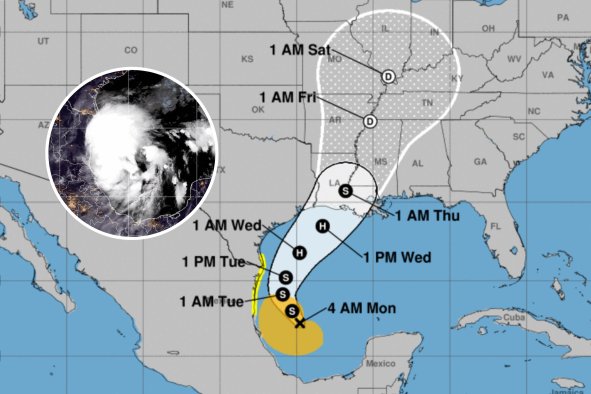Lake Erie has been spotted from space turning a lurid green as algae blooms across its surface, sparking warnings to "stay out of the water."
The explosion in population of blue-green algae covered roughly 320 square miles of the lake when the below picture was taken on August 13 by the OLI-2 (Operational Land Imager-2) on Landsat 9. By August 22, this had grown to over 660 square miles.
The bloom began around June 24 this year, according to NOAA, marking the earliest algal bloom in Lake Erie for over 20 years.
"The bloom was established by June 24th, which is the earliest bloom start we've identified since our monitoring began in 2002," NOAA said in a July report. "While toxicity varies throughout the bloom, toxins concentrate in surface scums during calm weather. People and pets should not swim in areas with scum."
Microcystis aeruginosa is the dominant species in this bloom. This species of cyanobacteria, also known as blue-green algae, is one of the most common and problematic organisms responsible for harmful algal blooms (HABs) in freshwater systems worldwide.
The main concern with M. aeruginosa is its ability to produce a toxin called microcystin, which primarily affects the liver, and can be harmful to both humans and animals if ingested. The algae form colonies of cells that can aggregate into large floating mats or scums on the surface of water bodies, and are concentrated areas of toxins.
During the week of August 12, NOAA's Great Lakes Environmental Research Laboratory measured toxins at "concentrations above the recreational limit".
Human exposure to microcystin through drinking contaminated water, eating fish exposed to the toxin, or coming into contact with it during recreational activities can cause symptoms like nausea, vomiting, diarrhea, skin irritation, and, in severe cases, liver damage. Wildlife, pets (especially dogs), and livestock are also at risk, and may suffer from fatal poisoning.
In 2014, a large algal bloom in Lake Erie led to a drinking water crisis in Toledo, Ohio, where the city's water supply was contaminated with microcystin. Algal blooms can also reduce oxygen levels in the water when they decompose, creating dead zones where aquatic life cannot survive. This impacts fish populations and disrupts the lake's ecological balance.
Blooms occur on Lake Erie every summer, with a moderate to above-moderate harmful algal bloom (HAB) having been forecast for western Lake Erie this year. A larger area of bloom does not necessarily mean that the bloom will be more toxic, however.
Microcystis blooms are strongly associated with high levels of nutrients, particularly phosphorus and nitrogen, which often enter freshwater systems through agricultural runoff (fertilizers and manure), wastewater discharges, and stormwater. The algae also thrives in warm conditions, and in calm, stagnant waters with little to no movement.
"Nutrient input from the Maumee River is the dominant driver of HAB variability from year to year," Brice Grunert, a professor in the Department of Biological, Geological, and Environmental Sciences at Cleveland State University, said in a NASA Earth Observatory statement.
This April saw a record level of rainfall in the area, followed by a heatwave, which may have triggered the early bloom.
"Owners can protect their pets by keeping their dogs away from bodies of water, such as lakes, ponds and rivers that you suspect may contain blue-green algae—this includes not letting them swim in or drink from the water, but also well away from the banks and surrounding areas," a spokesperson for the Kennel Club—a U.K.-based charity devoted to dog health and welfare—previously told Newsweek.
Do you have a tip on a science story that Newsweek should be covering? Do you have a question about algal blooms? Let us know via science@newsweek.com.
Disclaimer: The copyright of this article belongs to the original author. Reposting this article is solely for the purpose of information dissemination and does not constitute any investment advice. If there is any infringement, please contact us immediately. We will make corrections or deletions as necessary. Thank you.



